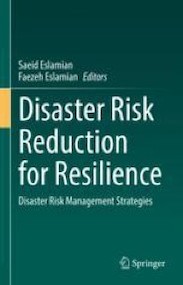Publication: « Understanding and Implementing Urban Resilience for Comprehensive and Local Risk Management » by C. Heinzlef
Heinzlef, C., Serre, D., 2022. Understanding and Implementing Urban Resilience for Comprehensive and Local Risk Management, in: Eslamian, S., Eslamian, F. (Eds.), Disaster Risk Reduction for Resilience. Springer International Publishing, Cham, pp. 103–128. https://doi.org/10.1007/978-3-030-72196-1_5

Faced with increasing risks and uncertainties in urban environments, local planners and decision-makers are forced to innovate their risk management strategies. In the 2000s, this strategy, which used to be focused on a hazard management, integrated new concepts such as the concept of resilience. Resilience, a multidisciplinary concept, is defined in the context of risk management as the capacity of a system to absorb a disruption and return to equilibrium following this disruption. This concept refers to technical, urban, architectural, political, economic, social, management, and environmental innovations in order to (re)question our risk management systems and approaches. This injunction to innovation perfectly suits our complex and evolutive urban world. Nevertheless, and despite a significant increase of the resilience concept in urban risk management, concrete advances still have to be made. For many actors, resilience remains at the level of discourse and political leitmotivs, without being integrated into strategies, management, and projects that are achievable and adapted to the territories. Faced with this observation, several research projects have sought to adapt this concept to the needs and requirements of local stakeholders in order to promote its adoption and integration into risk management strategies. This chapter will analyze some of these strategies.



